Plenty of people in early New England were persecuted for witchcraft, and not just in Salem, Mass.
Witches had troubled the European colonists from the get-go. In 1635, Plymouth Colony made it a crime to “form a solemn compact with the devil by way of witchcraft.” As late as the 19th century, women were persecuted for cursing butter churns, making animals sick and causing people to die.
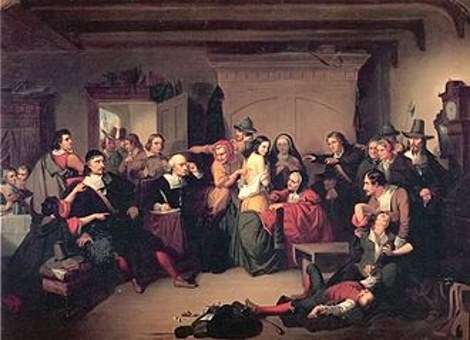
“Examination of a witch” by Tompkins Harrison Matteson (1853)
Salem’s witchcraft hysteria was just the most spectacular (and certainly the most memorable) of the witch trials. Two hundred people faced charges, and 20 died at the executioner’s hand. But Hartford had its own mini-witch hysteria, as did many towns scattered throughout New England.
Connecticut Witchcraft Prosecutions
In Connecticut, witch hysteria took hold 45 years before Salem began its mass executions. The colony formally tried 43 people for witchcraft (Massachusetts tried 50.) Most were acquitted or escaped, but nine men and two women were executed as witches between 1647 and 1663. The first, a woman from Windsor named Alse Young, died, as the others would, on the basis of flimsy evidence. She went to the gallows on the site of the Old State House.
The witch hysteria peaked during the “Hartford Witch Panic.” It started in 1662 when a young Hartford girl died after claiming a neighbor, Goodwife Ayres, tormented her. In 1662, Goodwife Ayres and her husband sensibly skipped town.
More accusations followed for the next 50 years in the Connecticut River towns of Hartford, Windsor, Farmington and Wethersfield. Most, however, resulted in acquittals as Connecticut judges came to their senses.
By 1715, the law making witchcraft a capital offense was off the books, and the witchcraft hysteria died down. (Click here for more about the Hartford Witch Panic.)
Disturbing Witches
Your chances of getting hauled into court for witchcraft got better if your neighbors didn’t like you. Often the people accused of dealing with the devil were shrewish or grouchy or arrogant. Sometimes they lived on a town’s margins, and took the blame for its misfortunes.
Eunice Cole of Hampton, N.H., was difficult, unlikeable and didn’t have much money. From 1656 to 1680 she went to court three times to face charges. She was in and out of prison for slanderous speech and familiarity with the devil. She did perform one near-magic feat: dying peacefully in her own bed at the age of 90. (Read more about Eunice Cole here.)
Just because a jury found you not guilty of witchcraft didn’t mean your persecution ended. A Boston jury exonerated Mary Webster of Hadley, Mass., but that didn’t stop her neighbors from disturbing her.
The Puritans believed ‘disturbing’ witches – beating or restraining them – prevented them from casting spells. Mary Webster’s neighbors dragged her from the house, hanged her from a tree until she nearly died, than buried her in the snow and left her. She survived, and spent the rest of her life known as ‘Half-Hanged Mary.’
Mary Webster was lucky compared to Susannah Martin of Amesbury, Mass. A neighbor first accused her of witchcraft in 1669. Susannah’s husband sued the neighbor for slander, and ultimately she was cleared of the charges. But the taint of the accusation lingered, and she was charged again during the Salem witchcraft hysteria of 1692. She died on the gallows at the age of 70 with three other accused witches. (Read about Susannah Martin here.)
Court of Oyer and Terminer
In Salem and nearby towns, officials began rounding up suspected witches even before Gov. William Phips ordered the Court of Oyer and Terminer convened.
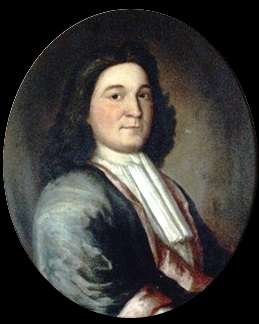
William Phips
As the storm gathered, Philip English may have been a target because of his wealth. Essex County’s High Sheriff George Corwin had a nasty habit of seizing the property of accused witches and dividing the spoils with his deputies.
Corwin arrested Philip English’s wife Mary on April 18, 1692. Five weeks later, the Court of Oyer and Terminer was formed to investigate the disturbances in Salem. (Read more about it here.) The court quickly turned into a killing machine.
Philip English followed his wife to jail when a neighbor accused him of witchcraft. She said he pinched her and threatened to kill her if she didn’t touch his ‘Devil’s book.’ Philip and Mary English managed to flee to New York until the bloodshed ended.
Two hundred (perhaps a few more) were charged in what historians now believe was a massive case of petty jealousies and score settling. Nineteen died by hanging, one man was crushed to death and five people died in jail.
But then the Puritan leaders came to their senses and realized the witchcraft trials were a shocking case of government run amok — and an embarrassment. After the 20 alleged witches were executed in Salem, Mass., no one was indicted, convicted or executed for witchcraft in New England. One of the witch trial judges, Samuel Sewall, even apologized for his role in the witch hysteria. (Read about Judge Sewall here.)
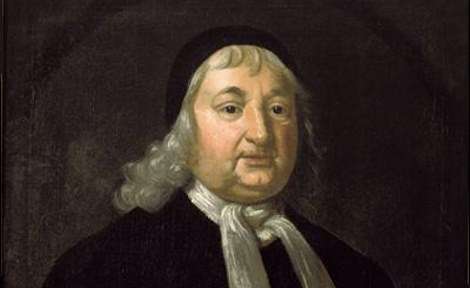
Samuel Sewall.
Witchcraft After the Trials
That didn’t mean people stopped believing in witches. Rhoda Dustin was known as the Witch of Weare, N.H., but lived in an era when witchcraft prosecutions had died down. She was born in 1736, and with her husband ran an inn. The townspeople believed she could fly, inflict illness on people and curse butter churns so they wouldn’t make butter. Though they gossiped about her and tried to counteract her curses, she was never tried and died peacefully in Vermont in 1824.
Hannah Cranna, like Susannah Martin and Eunice Cole, was a shrew. But she was born nearly a century after the witch trials ended, in 1783. Hannah married Capt. Joseph Hovey, probably much older than she, and they lived in Monroe, Conn.
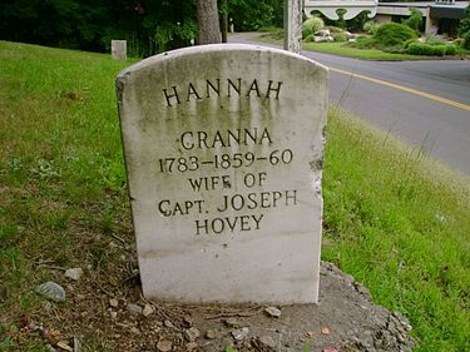
Hannah Cranna’s headstone.
No whisperings of witchcraft followed her until her husband died suspiciously. He went out for a walk one night and fell over a cliff in an area he knew well. People thought she’d cast a spell on him.
From then on, Hannah lived in poverty, and used her reputation for witchcraft to extort food and firewood from her neighbors. She never went to trial, though neighbors talked about her.
When she died, her neighbors ignored her wishes and buried her after sundown. When they returned to her house, it had gone up in flames, sealing the legend of Hannah Cranna, witch. (Read more about Hannah Cranna here.)
This story was updated in 2022.

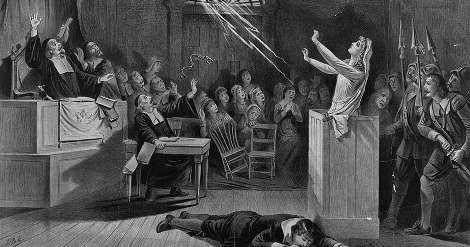
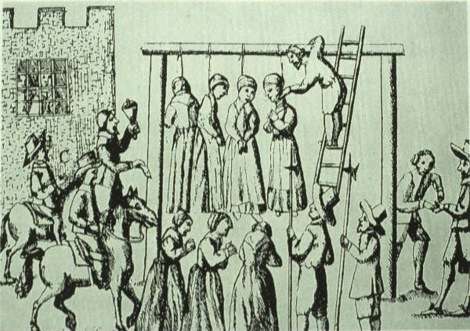
1 comment
[…] await her trial. Some of the magistrates who sat in judgement of her went on to hear the horrific Salem witchcraft trials of 1692-3, the last hurrah for New England’s witch hunters. They had recognizable names: Thomas […]
Comments are closed.